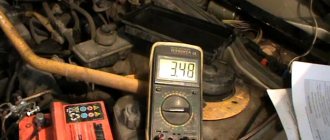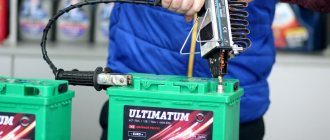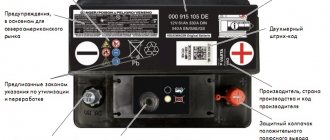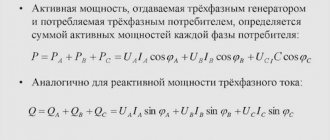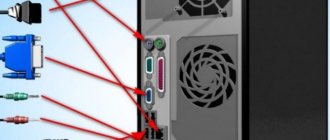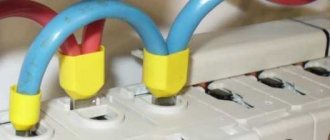IN charging the battery Not only completely discharged (or just purchased) batteries need batteries, but also those that have become very weak during use. The difference between these two approaches is the different time required to fully charge a given battery model. With a new battery, it can last from 25 to 50 hours.
The charging time of used batteries is determined not only by how low they are, but also by their service life. In the case of very discharged and not new products, it may take 24-36 hours or even more.
Charging time calculator
If it is important to determine the time required to charge the batteries at your personal disposal, it is calculated very simply without delving into the details of the processes taking place. This does not require complex formulas, which in modern conditions are replaced by a calculator for calculating battery charging time . The whole procedure in this case comes down to filling out just two fields:
- In the “Battery capacity” field, the corresponding indicator of the device being serviced is indicated.
- Charging current field indicates the value of the parameter that is supposed to be used to charge the battery from an electrical device.
When you click on the “Calculate” button, the procedure for calculating the battery charging time from a given type of charger starts.
Battery types
Car batteries use current sources based on various technologies. If previously alkaline cells were in demand, the modern market is represented by acid batteries. This technology allows the use of acid placed between lead plates as an electrolyte. The features of this design require battery maintenance, which consists of topping up with distilled water.
No less popular are gel batteries, the use of which does not require maintenance. This technology is more expensive, and the charging process is no different from other batteries. There are also lithium-ion batteries, but such devices do not always have a starting current of sufficient power, which limits their use.
How to charge the battery
The discharge of a particular battery is usually judged by the density of the electrolyte poured into the jars, the value of which for a working battery is on average 1.26-1.28 g/cm³ (at 12.5 Volt voltage). It depends on what initial value this indicator had for the newly purchased device (it can be 12.7 or 12.9 Volts). The smaller it is for a given battery sample, the more significantly the device is discharged.
Table 1. Recommended electrolyte density depending on climate and time of year.
| CLIMATE AND SEASON WHEN MEASURING ELECTROLYTE DENSITY | DENSITY (g/cm3) | ||
| Battery charged | Battery discharged | ||
| By 25% | By 50% | ||
| Very cold (temperatures in January range from -50°C to -30°C) | 1,30 | 1,26 | 1,22 |
| Cold (temperature in January from -35оС to -15оС) | 1,28 | 1,24 | 1,20 |
| Moderate (temperature in January from -15°C to -8°C) | 1,28 | 1,24 | 1,20 |
| Warm humid (temperature in January from 0°C to +4°C) | 1,23 | 1,19 | 1,15 |
| Dry hot (temperature in January from -15оС to +4оС) | 1,23 | 1,19 | 1,15 |
Please note: A decrease in composition density of 0.01 g/cm3 relative to the nominal value means that this battery has been discharged by approximately 6-8 percent.
The degree of charge of the device is determined by the jar for which the meter shows the lowest density.
Cutaway car battery
Table 2. Battery charging time depending on the state of charge and electrolyte density
How long do you have to wait for the car battery to charge?
A car battery is considered fully charged if the electrolyte begins to boil. On average, the battery takes about 9 hours to charge. However, this is considered an approximate value.
Interesting materials:
How to choose the right salted herring? How to choose the right salted salmon? How to choose the right ripe mango? How to choose the right knitting needles? How to choose the right sushi? How to choose the right beets? How to choose the right fresh trout? How to choose the right color for interior doors? How to choose the right coat color? How to choose the right hat color?
Table of battery charge level depending on electrolyte density
| Charge level (%) | Electrolyte density (g/cm³) | Degree of discharge (%) | Battery voltage (V) | Charge time at 10% capacity (hours) |
| 100 | 1,277 | 0 | 12,73 | Not necessary |
| 90 | 1,258 | 10 | 12,62 | 2 |
| 80 | 1,238 | 20 | 12,50 | 4 |
| 70 | 1,217 | 30 | 12,37 | 6 |
| 60 | 1,195 | 40 | 12,24 | 8 |
| 50 | 1,172 | 50 | 12,10 | 10 |
| 40 | 1,148 | 60 | 11,96 | 13 |
| 30 | 1,124 | 70 | 11,81 | 16 |
| 20 | 1,098 | 80 | 11,66 | 20 |
| 10 | 1,073 | 90 | 11,51 | 24 |
| 0 | 1,06 | 100 | 11,4 | Sulfation |
The degree of charge of a battery can be judged by the density of its electrolyte.
The lower the density, the more the battery is discharged. Typical batteries, discharged by more than half in the summer season, will have to be removed from the car and restored in the winter, even after 25 percent discharge. In addition, batteries whose density in different sections differs by more than 0.02 g/cm³ require additional recharging.
Selecting the charging current
The most suitable current for charging any battery is considered to be 0.05 of the full capacity (the so-called “equalizing” charge). When used, it is possible to completely restore the electrolyte condition in all sections of the battery.
As an example, consider the following cases:
- To charge a battery with a capacity of 55 A/hour, a current of 2.75 Amperes is required.
- For a 60 A/h product this figure will be 3 Amperes.
Additional information: The equalizing charging mode allows you to neutralize the effects of deep discharges.
It is also recommended to be used to eliminate the effect of plate sulfation, which is caused by prolonged use of the product at a charge level below 70 percent.
A “forced” method is often used, in which a different current ratio is selected charging In this case, its value is 10 percent of the battery capacity. A standard 55Ah battery is usually charged at 2.75-5.5 A, and for 60Ah batteries the charging current is set in the range from 3 to 6 Amps. In this case, it is always assumed that the lower the current entering the battery, the deeper the charge. This option is preferable, despite the fact that more time is spent on it.
Accumulator charging
Conversely, at high current the battery boils (the water contained in the solution decomposes into oxygen and hydrogen). This process has a destructive effect on the battery plates. A similar situation arises with the voltage applied to the battery (the higher it is, the faster the batteries can be charged). But its nominal value should always remain within 13.8-14.5 Volts. Increasing its value to 16.0-16.5 Volts is allowed only when charging maintenance-free models.
FAQ
How long does it take to charge the battery to start the car?
To start the car and be able to drive in the summer, it is enough to charge the battery for 30 minutes with a current of 10% of the battery capacity
.
This time is enough for its voltage to rise to 11.8 Volts
and the engine can be started by the starter without external force. In winter, you will need to charge the battery for at least 1 hour to increase its voltage to 12V. Further charging of the battery will occur from the generator when the car is driven at speeds above 1500 rpm.What determines the speed of battery charging?
Charging speed depends on current strength
. The rate of the chemical reaction will accelerate as the charge current increases. The higher the current from the charger goes to the battery, the faster it will charge, but the stronger and hotter it will be. It is strictly prohibited to charge maintenance-free batteries with high current.
How many amps should I use when charging the battery?
The nominal value of the charging current is 10% of its capacity
. Therefore, when charging the battery you need to set it to 4.5, 5.5, 6.0 or 7.0 amperes. Depending on what battery you had to work with. And to accurately calculate how many amperes you need to set on the charger, in your case, use a calculator by multiplying the battery capacity by 0.1.
How long does it take to charge a 60 amp battery?
To understand how much to charge a 60ah battery, you must first determine the degree of its rarefaction. The average charging time for a dead battery is from 10 to 12 hours
. If battery 60 is charged at 6 amperes, when it has only 11.7 V with an electrolyte density of 1.1 g/cm³, then it will restore its full capacity in 14 hours. The final time depends on the discharge level. The battery is considered fully charged when the voltmeter shows 12.73V at its terminals and the electrolyte is actively boiling.
How many amps should a charged battery show?
To check whether the battery is charged, do not check how many amps the multimeter shows, because a charged battery will no longer take any amps. The voltage is checked at the terminals, which should be at least 12.7V half an hour after charging and about 13.4V if checked immediately after disconnection. Therefore, how many amperes a charged battery should show is not a correct question. If the charger does not have indicator lights, but a built-in ammeter, then the question of how much ampere will be shown on the charger display (which charges with constant voltage) may arise, however, when fully charged, you will also see an arrow at zero (0.1 A). But if charging was carried out with direct current, then it is not the current that needs to be controlled, it will be the same as it was initially installed - look at the voltage. A charged acid battery connected to the device will show 14.4V. A calcium battery fully charged to 100% will produce 16.3V and the current will jump to 0.8A after it initially dropped to 0.4, which will indicate the start of electrolysis.
Battery charging methods
There are several known methods, among which the following stand out:
- In constant current mode.
- Under conditions of constant voltage applied to the battery terminals.
- A combined method in which charging is carried out automatically.
- Fast procedure for a screwdriver battery , for example.
The penultimate and last options from the list are usually not considered, since they are used only in exceptional cases.
Constant voltage
Set the constant voltage to, say, 14.4 Volts. The current is automatically regulated (decreased), that is, at the beginning it can be 10 Amperes, and at the end of the charge 0.2 A.
Currently, almost all chargers work using this method, that is, the voltage is always constant, but the current varies.
Direct current
With this method, the current is constant throughout the charging process. Let's say we set it to 2 Amperes. At the beginning of the charge, the voltage will be 15 V, and at the end it may drop to 14.4 V.
Tips for Newbies
There are fully automatic chargers that do not require any knowledge from the user at all. Just so as not to confuse the polarity of the connected wires. But if you need to do the job efficiently, it is still advisable to know and understand something.
Features of charging maintenance-free batteries
Maintenance-free batteries in sealed cases should not be subjected to long-term charging with high current, this can lead to deformation of the case.
They may sometimes require some excess charging voltage, up to 16 Volts, but the current should not go beyond the permissible limits. And if the current begins to drop and the voltage rises, exceeding the specified limit, then the battery has taken as much energy as it can.
You must understand that the declared capacity coincides with the actual one only for a new battery, and during operation it evenly drops, sometimes significantly if operating conditions have been violated.
What is fast charging
Accelerated charging is considered to be double the current, that is, about 20% of the declared capacity. This mode shortens the battery life, so you can use it only for a short time, no more than half an hour, and do not allow the electrolyte temperature to rise above 50 degrees.
Calculating time using formulas
Before calculating the battery charging time , first of all, you need to familiarize yourself with the classic formula for determining the charging current. It looks like this:
I=Q*k.
where Q is the operating capacity of the battery,
k is a coefficient that takes into account the characteristics of the environment (its nominal value ranges from 0.04...0.06, and the optimal value is 0.1).
Based on this recommendation, to calculate the charging time for a completely dead battery, the formula takes the form: T = Q/ I. By substituting specific values into it, you can verify the significant amount of time required. But most often what is needed is not full charging , but only partial restoration of lost capacity. For this reason, the actual time will be significantly less.
To make an approximate estimate of how long it takes to charge batteries with direct current, you first need to determine the degree of their discharge.
We measure the voltage on the battery
Next, you will need to find out the lost capacity, after which, by selecting a specific value of the charging current, proceed to calculating the time required for complex charging. The formula for calculating this indicator when servicing a car with a charger looks like this:
Fast charging
It is important for the modern user to know: can the battery be charged using an accelerated method if circumstances require it? Experts advise resorting to this method only in exceptional cases when no other options can be found.
Important! It is strictly not recommended to use the accelerated method for battery products with banks without filler necks.
When using this type of charging, so-called “maintenance-free” batteries can easily fail.
Typical maintenance free car battery
When considering this method, it is also important to take into account that batteries that have been in use for many years have a capacity that is very different from the nominal value. This feature forces experienced users to rely no longer on time calculation data, but to evaluate it by eye (to distinguish the accelerated mode from the normal one). Experts, as a rule, judge the possibility of using certain modes by the volume of gases released and the temperature of the electrolyte.
If it rises above 45°C, you should interrupt the process and allow the battery to cool slightly. If excessive gas emission is observed, then accelerated charging should be stopped and the charging current should be reduced to an acceptable value.
It is very difficult to continuously regulate the current entering the banks directly during the charging process (it is advisable to adjust its value at least every 5 minutes). To avoid confusion during such an adjustment, experts advise using a summary table called “charging”. It has only three columns, filled in as follows:
- The first contains the time (t) and data at that moment from the start of charging.
- The second column records the value of Q, which is used to judge how much time is left until its end.
- And finally, the third column records the value of the current (I) used when restoring the battery.
Table 3. Battery charging time using the accelerated method
| Charging time t, min | Capacity Q, missing to 100% of the rated charge, A*h | Charge current I, A |
| 0 | 60,0 | 54,0 |
| 5 | 55,5 | 49,9 |
| 10 | 51,3 | 46,2 |
| 15 | 47,4 | 42,7 |
| 20 | 43,8 | 39,4 |
| 25 | 40,5 | 36,4 |
| 30 | 37,5 | 33,7 |
| 35 | 34,7 | 31,2 |
| 40 | 32,1 | 28,9 |
| 45 | 29,7 | 26,7 |
| 50 | 27,5 | 24,7 |
| 55 | 25,4 | 22,9 |
| 60 | 23,5 | 21,1 |
| 65 | 21,7 | 19,5 |
| 70 | 20,1 | 18,1 |
| 75 | 18,6 | 16,7 |
| 80 | 17,2 | 15,5 |
| 85 | 15,9 | 14,3 |
| 90 | 14,7 | 13,2 |
| 95 | 13,6 | 12,2 |
| 100 | 12,6 | 11,3 |
| 105 | 11,7 | 10,5 |
| 110 | 10,8 | 9,7 |
| 115 | 10,0 | 9,0 |
| 120 | 9,2 | 8,3 |
| 125 | 8,5 | 7,6 |
| 130 | 7,9 | 7,1 |
| 135 | 7,3 | 6,6 |
| 140 | 6,7 | 6,0 |
Control, communication and security
Power stages are usually controlled using microcontrollers. Microcontrollers of the XMC4000 include analog-to-digital converters (ADCs) with flexible settings, as well as multifunctional timers and peripheral modules that allow PWM control. The presence of a CAN controller ensures that the charging modules can communicate with each other and coordinate their operation when using different types of batteries. Billing security, software updates or hardware changes can be verified using the Hardware Security Module (HSM) of the AURIX™ . This family is often used in automotive safety applications.
Authentication of individual modules and protection against counterfeiting can be ensured using specialized OPTIGA™ Trust B . To organize a more reliable and comprehensive protection system, you should use microcontrollers of the OPTIGA TPM .

